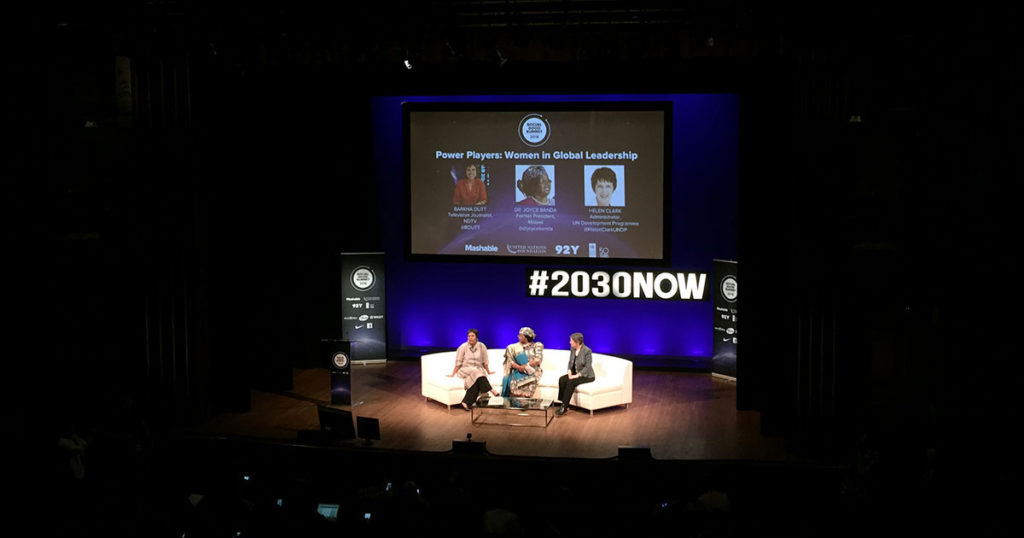Social Good Summit 2016: How DHS data can help measure progress towards meeting the Global Goals
We were fortunate to have attended the UN Foundation’s Social Good Summit again which, through a variety of vibrant speakers from US UN Ambassador Samantha Power to actor and activist Alec Baldwin, emphasized the recently-adopted 2030 Sustainable Development Goals (SDGs), also known as the Global Goals.

While we thoroughly enjoyed all of the sessions and speakers, we were particularly moved listening to Joyce Banda on challenges for women in public office, advocates from the Malala Fund inspiring conversation about the importance of education for girls and refugees, and Memory Banda describing life for girls in Malawi and taking a stand against child marriage.
Half of women in #Malawi were first married by age 18 https://t.co/U6HKaAg7wi #endchildmarriage #2030Now pic.twitter.com/UMDxl5zXw5
— The DHS Program (@DHSprogram) September 19, 2016
At this year’s summit, it was again made clear that the collection of quality data is vital. Data will measure progress towards the SDGs. As DHS data supported collection and reporting of data for the Millennium Development Goals (MDGs), it is expected to contribute to the measurement of as many as 13 of the 17 SDGs.
Since 2013, before the SDGs were officially determined and announced, The DHS Program was involved in dozens of meetings to determine the feasibility of collecting data required to measure SDG indicators in DHS surveys. After careful review of all 230 SDG indicators, we highlighted 86 that are population-based and feasible through household or facility surveys. Of these, we have classified 32 that are already in our questionnaires and modules, and 20 that require minor additions or changes to questions and reporting. Below are just a few examples:
Goal 3: Proportion of women age 15-49 who have their need for family planning satisfied with modern methods. Learn more>>
Goal 5: Proportion of women age 15-49 who make their own informed decisions regarding sexual relations, contraceptive use, and reproductive health care. Learn more>>
Goal 6: Proportion of population using safely managed drinking water services. Learn more>>
Goal 7: Proportion of population with access to electricity. Learn more>>
Goal 16: Proportion of children under 5 whose births have been registered with a civil authority, by age. Learn more>>
By the time the next summit rolls around, we hope to have integrated those indicators that are feasible and practical for collection in a DHS survey into all DHS tools. In the meantime, you can watch the 2016 Social Good Summit live stream and check out what we were saying during the summit.


Please share with me the 86 indicators mentioned in your write-up indicating which ones the 32 and which ones are the 20. We are just in the process of kicking off DHS survey for Somalia. We are looking forward to collaboration with the DHS Program for the success of this survey